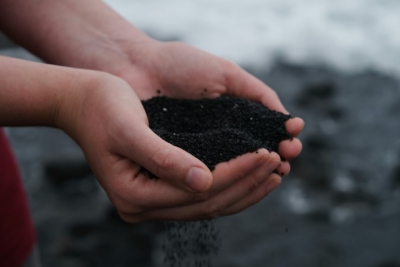Mushroom growers worldwide face the same problem: there are times during cultivation when the compost exhibits either more or less activity than desired. This can happen right after filling the compost, during ventilation, or if the compost temperature rises too quickly during the first flush, which can severely impact mushroom quality.
Most farms have this under control, but each grower must find the optimal formula for their own operation. This principle can be compared to a balance: if you change something on one side, you must adjust the other side to maintain equilibrium.
The entire process starts with filling the compost in the room. There are a few important factors to consider at this stage. The moisture content and structure of the compost are crucial for the expected activity right after filling. Dry compost with a lot of structure will show high activity immediately after filling. This compost should always be filled thicker to achieve the desired kilograms per square meter. This extra thickness is mainly filled with air, which acts as a buffer for heat.
Once the compost becomes active, this air warms up and is very difficult to cool down again. Compact it as firmly as possible. For wet compost with little structure, do the opposite: fill it loosely and avoid watering immediately after filling.
Mycelium Growth during incubation
If everything proceeds normally during the growth phase of the compost, the first signs of activity can be seen around day 9 after spawning. This activity increases as the compost continues to grow. By day 15, the compost should be fully colonized, and activity will start to decrease. If, for some reason, the compost needs to be covered or removed from the tunnel earlier, this activity will continue in the growing rooms. At that point, controlling this activity becomes very difficult because the casing soil acts like a blanket, retaining heat in the compost. In such cases, keep the air temperature in the room very low to maintain the compost temperature at 26°C. This will also cool the casing soil, preventing mycelium growth in it.
Supplementing
Supplementing the compost provides extra activity. The level of activity depends on the type and amount of supplement used. Typically, 15 kilograms of supplement per 1,000 kilograms of phase 3 compost yields optimal results. However, this depends greatly on the compost. If the compost has a high nitrogen content, 15 kilograms might be too much. Supplementing is an excellent way to increase both the quantity and quality of mushrooms, but the compost must be free of competitive mold infections. Infected compost can react negatively to supplements because these are also food sources for competitive molds, which can harm the mycelium or mushrooms, negating any benefits of supplementation.
Filling Weight
Filling weight is a crucial factor for compost activity and significantly affects the total mushroom yield. Generally, a 10% increase in compost results in a 10% increase in mushrooms. This is true, but the climate unit must be able to manage the additional compost. Again, it's about balancing the ability to handle increased activity with the potential yield benefits.
As you can see, the desired but sometimes troublesome activity of compost depends on many factors. Literature provides ideal filling weights, but in practice, it varies from farm to farm. Growers must determine the ideal ratios for their specific operations.
Total Mushroom Service
Jeroen van Lier






















